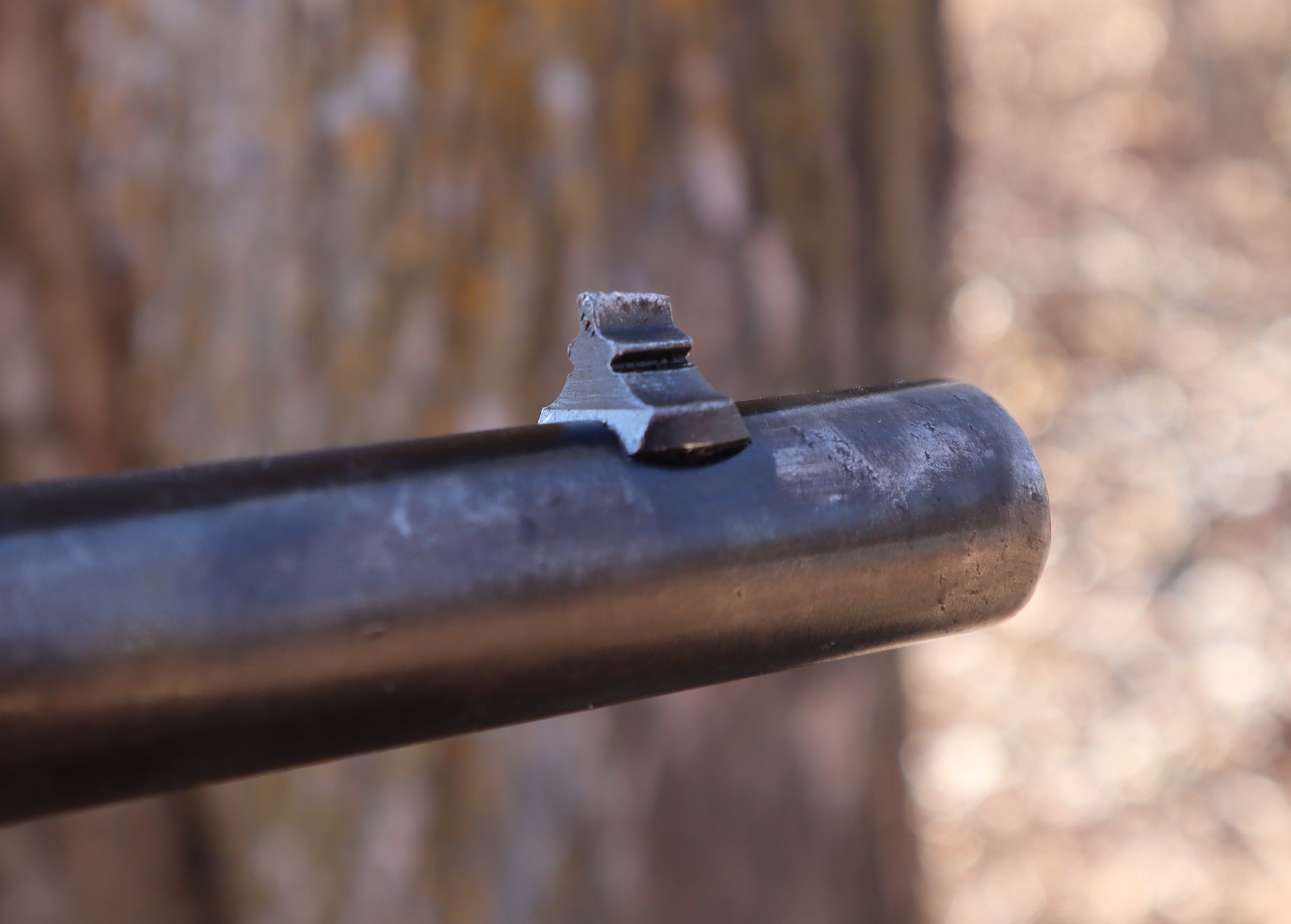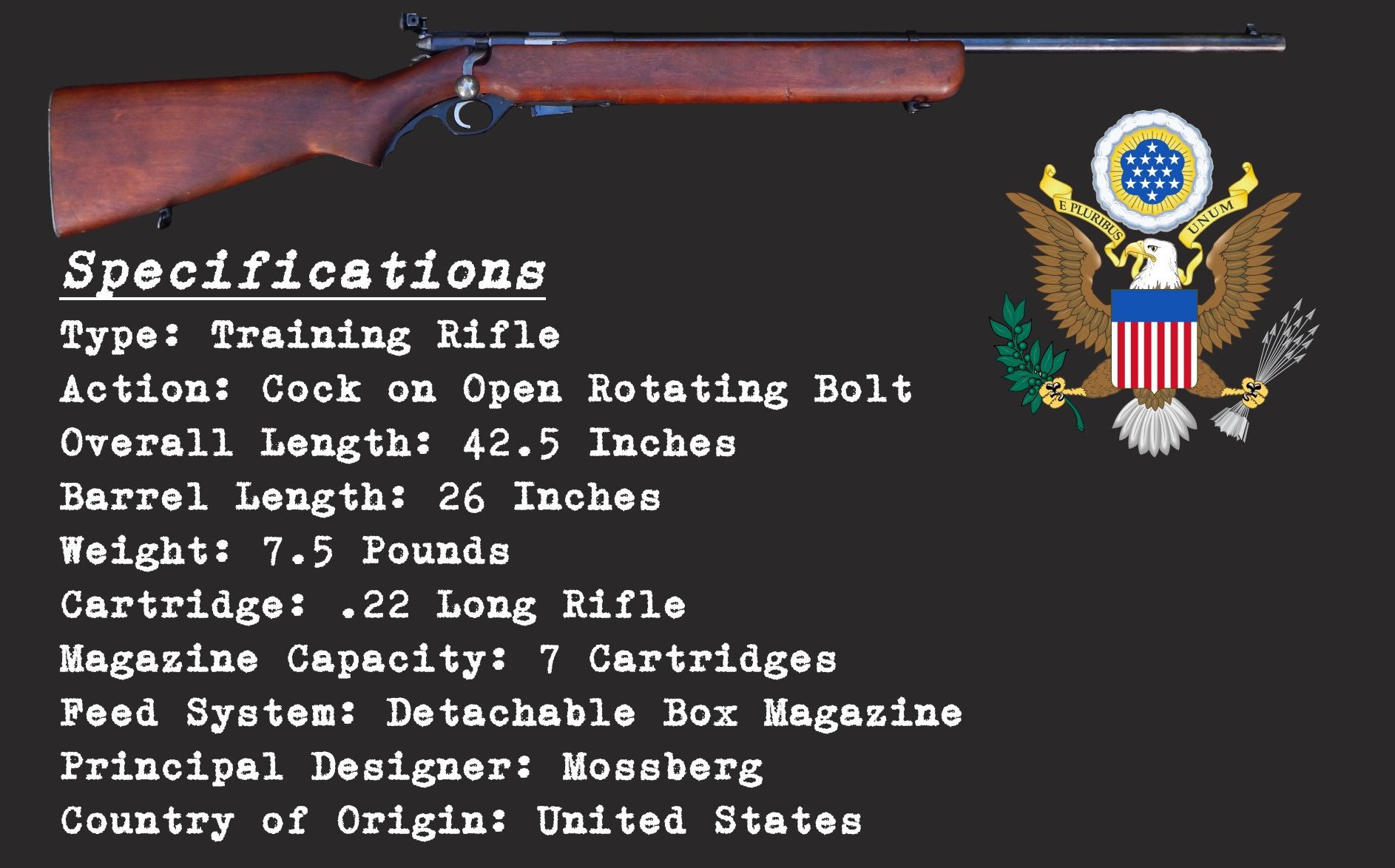Mossberg M44US
Faced with a rapidly expanding military and a need to conserve primary small arms for the front lines, the US would turn to a simple but effective bolt action trainer in .22 Long Rifle.
The History
When it entered into the Second World War in late 1941 the United States had already been spooling up its war industry to support the Lend-Lease Program, but the standard basic marksmanship trainer that was in service, the Springfield M1922, was a complicated and costly item. Produced to exacting standards, the M1922 was essentially a full size M1903 rifle chambered in .22, and a more economical solution was sought. This would be found in the commercial .22 rifles produced by Mossberg, which were already being purchased by the British military for training purposes.
The stamped rear sight of the M44US, which is adjustable for both windage and elevation
This basic family was subjected to a series of simplifications to cut costs even further, until a mass production variant was introduced as the M44US, with the government designation being applied for both patriotic and marketing reasons. For its purpose of basic marksmanship training it served well, as it’s aperture sights were similar enough to the standard M1 rifle to be useful as well to experienced civilian shooters used to open sights as well as to complete novices.
The civilian style barleycorn front sight
The new rifle would see a long service life, surviving long past the end of the Second World War and remaining in use until at least the 1980s if not longer, when they began to be sold to the civilian market via the Civilian Marksmanship Program. The rifles remain prized to this day for their accuracy and historical provenance.
The Receiver Markings, showing the “US Property” mark
The Design
The M44US is a fairly simple bolt action repeater, with a cock on open rotating bolt and fed by a seven round detachable magazine. A removable screw in the magazine could allow it to be converted between .22 Long Rifle and .22 Short cartridges. The stock on the government issue rifles is a of a relatively cheap birch construction, while both blued and parkerized finishes are encountered.
The O. F. Mossberg & Sons rollmark, along with the model and caliber designation. An additional “US PROPERTY” mark is also present
The original Lyman sights used by commercial Mossberg .22 rifles was found to be both too expensive and difficult to produce, and as a result only the earliest feature these as opposed to a simplified stamped steel type. The barrel notably features a lead-lapping process, which is a process that results imperfections in the bore being negated, allowing for a very accurate rifle.
The bolt and magazine removed from the rifle
This Example
The example in the collection was produced in early 1943 as a part of the second known order of 7,000 rifles. It retains a good condition blued finish as well as its birch stock, although the plastic trigger guard is slightly warped, a common issue on these rifles. Notably, the rifle has the remnants of a cartouche on the bottom of the pistol grip, which appears to be Chinese in origin.
The possible Chinese cartouche on the bottom of the stock’s pistol grip
Opinions
The M44US is, despite being intended as a cheap rifle, a solid .22 rifle that has a reputation for accuracy. Its action is reliable and fairly smooth, and its trigger crisp but heavy. Like many trainers, it is rather heavy compared to many civilian .22 rifles, but with this comes the aforementioned accuracy due to the long barrel. With excellent adjustable sights as well this makes for an excellent platform to learn marksmanship fundamentals as well as the myriad other uses of the humbe .22. Combined with the history of the piece, as well as its generally fairly low price point, the M44US is a solid addition to any collection of Second World War era firearms.
US Navy Recruits at the Great Lakes Station inspect an M44US trainer in the 1960s
Observed Values and Frequency
Updated: February, 2024
AVERAGE VALUE (USD): $300-$400
FREQUENCY: Uncommon
COLLECTOR’S NOTES: Commonly found without a magazine, low end price applies to those in such condition








